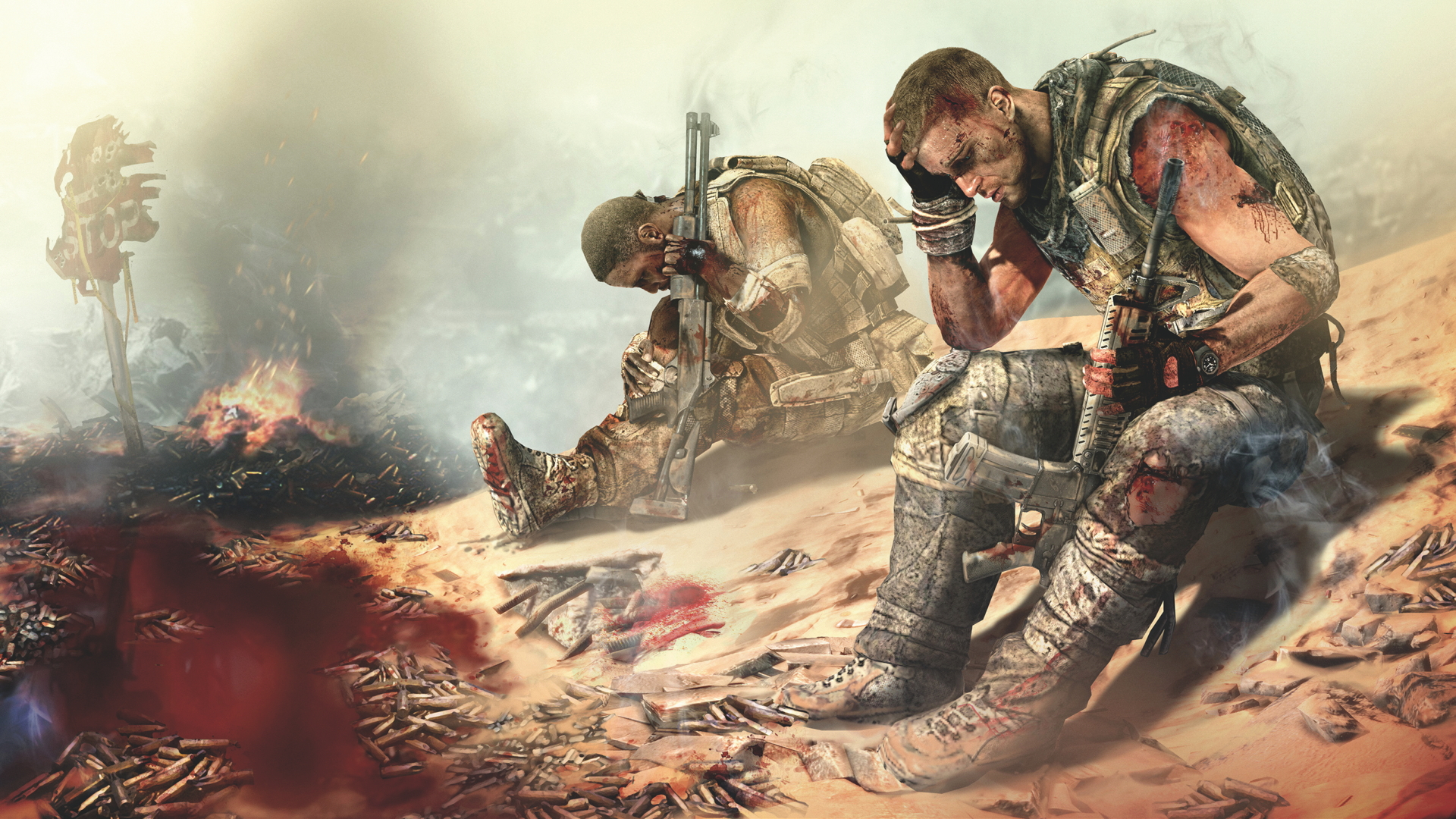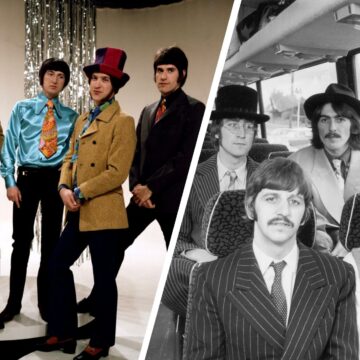“War. War never changes,” reads the introduction to each of the Fallout games, and the sentiment is true to an extent. What does change, however, is how war is presented in media. Video games, in particular, have occasionally offered a more nuanced portrayal of war, particularly within the past decade or so.
Like so many action movies of the same decade, 1980s games such as Commando, Operation Wolf and Ikari Warriors took a jingoistic approach to combat, where the player casually gunned down waves of enemy soldiers to complete their vaguely-defined mission. There was rarely much background to the enemy or justification for their deaths.
READ MORE: The Day Before | Cutting-edge survival game or vapourware?
“Video games have typically presented war as a series of high-action combat sequences against faceless, malevolent foes,” says Dr David Waldron of Federation University. “Complexities like logistics, morale, moral ambiguity, and even the impact of fatigue or ammunition were often ignored. This closely paralleled trends in adventure fiction, which typically focused on a Manichean worldview of good versus evil and unproblematic views of military conflict.”
Sensible Software’s Cannon Fodder, released in 1993, was something of an exception, with a darkly humorous tone that satirised war and its futility. The core premise was similar to other games at that time – enter enemy territory and slaughter hapless foes to complete missions – but soldiers had individual names. Every mission was followed by a graveyard which showed how many had fallen in combat. On a nearby hill, new recruits queued to replace those lost.
Nonetheless, there has long been a gung-ho approach to war in video games, which continues to this day in such long-running franchises as Battlefield or Call of Duty. An example of this was Call of Duty: Modern Warfare 2’s mission, No Russian, which provoked a fair amount of controversy when the game emerged in 2009. In it, players took control of undercover agent Joseph Allen, who took part in a terrorist attack at a civilian airport.
While the game’s graphically detailed, its realism doesn’t extend to the trauma of the situation or the massacre’s consequences. Instead, it implied that such ethically questionable operations are acceptable if they’re pursued in the name of national security. In raw storytelling, its role was even more cynical since it was essentially used to introduce the game’s villain, Makarov.
“There’s a dark glamour to warfare, as they have stories of derring-do and heroes under fire,” says video games writer and author James Swallow. “You don’t often see any of the morally grey considerations that real warfare exists in.”
Elsewhere, we’ve seen an occasional shift in developers’ approach to depicting war in games. Spec Ops: The Line, released in 2012, initially seemed like a generic cover-based shooter, but as the story progressed, it soon became apparent that Spec Ops: The Line was a deconstruction of the game’s own bellicose genre.
Written by Richard Pearsey and Walt Williams, and inspired by Heart of Darkness and Apocalypse Now, Spec Ops: The Line did something very different from a typical Call of Duty entry: it made its violence meaningful. Spec Ops: The Line follows Captain Walker as he leads his Delta Squad on a reconnaissance mission in a Dubai devastated by sandstorms. Walker’s hero complex results in him abandoning the mission to save as many people as possible, but his actions inadvertently trigger even more deaths.
Spec Ops: The Line offered a refreshingly different depiction of conflict, daring to raise questions about the ethics of killing people in a video game as a form of entertainment. “Games critical of war strive to remind players that war is anything but fair, and that we should be critical of the pleasures typically associated with exercising state-sponsored violence,” says Matthew T Payne, associate professor of media studies at the University of Notre Dame and author of Playing War: Military Video Games after 9/11. “Sometimes this means providing an undependable narrator, or drawing attention to the alienating nature of war machinery, techniques which rupture any sense of immersion.”
The widespread availability of game-creation tools and the medium’s globalisation has helped create a broader representation of different cultures’ perspectives. Developers in Eastern Europe, in particular, have created video games based on their own experiences of conflict. For example, the wartime atrocities civilians experienced during the 1992 Siege of Sarajevo inspired This War of Mine, released in 2014 by Polish developer 11 Bit Studios. Rather than presenting its story from the viewpoint of a soldier, the game challenged players to manage a group of civilians living in a war zone. There’s little information about the opposing factions in the war; instead, the focus is on the daily struggle for survival.
READ MORE: Duke Smoochem 3D | 2020s dystopian Britain rendered in 1990s video game form
This War of Mine could quickly have become a base builder were it not for the NPCs’ character development and emotional responses. This is especially noticeable when scavenging for resources at night; for example, an elderly couple begs players not to take their food. The emotional resonance is such that it challenges players to decide how much they’re willing to bend their own moral code to progress.
“At some point during development, when the game mechanics were in place, the team felt like it was a war-themed mod for The Sims,” recalls Konrad Adamczewski of 11 Bit Studios. “The gameplay was based on managing your staff and resources, but there was no emotional layer. We then came up with the idea to make a system of behaviours for the NPCs, so they could act differently when they meet the player. That helps players feel the emotions and different choices that you can make.”
One game that has been directly affected by war is S.T.A.L.K.E.R. 2. Work on the survival shooter sequel began in 2018 at Ukraine-based studio GSC Game World but was put on hold when Russia invaded in February 2022. The development team arranged to shift their base from Kyiv to Prague, but not all could leave; some team members volunteered to stay and defend their country. Their war experiences will undoubtedly influence S.T.A.L.K.E.R. 2 or the games they make after it. As lead narrative designer Daria Tsepkova says, “It is not easy to write violent quests when there’s a war outside your window.”
As proven by the ongoing success of the Call of Duty series, not to mention the cartoonlike combat of PUBG and Fortnite, games will always flatten out the nuances of war to a binary confrontation between opposing ideologies. But games still emerge from time to time with a more realistic approach to conflict – games that dare to depict war as inherently destructive. And, as Matthew Payne points out, video games have only just begun to scratch the surface when it comes to highlighting – or even protesting against – the political failings that lead to war.
“In the past, citizens and artists have used their voices and works to push back against policies and media that uncritically celebrate the military-entertainment complex,” concludes Payne. “As an interactive artform, games have the unique ability to show us complex and dynamic systems at work, and – if their creators so choose – they can likewise demonstrate the failures of our foreign policies and how we’re often blinded by our own political hubris.”





